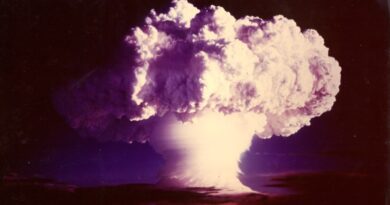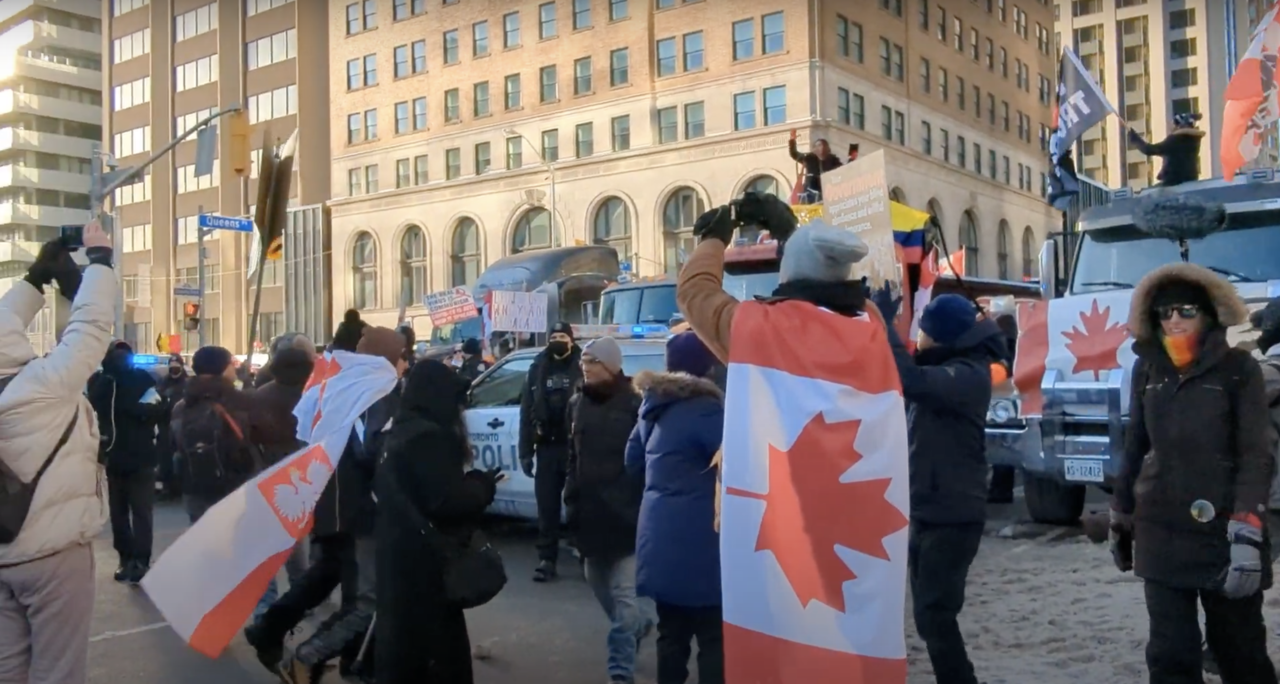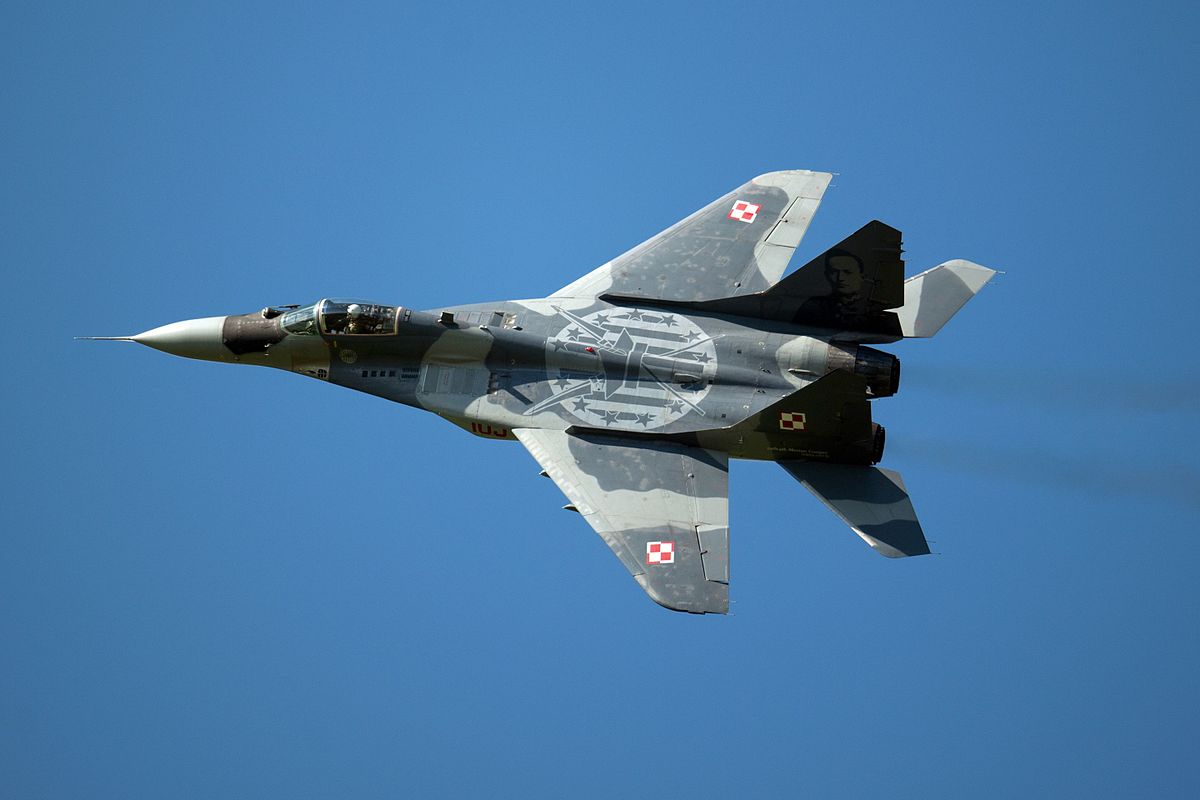Putin’s word: Blood on the asphalt

An outstanding and record-breakingly popular series about youth gangs in the perestroika era is – not necessarily intentionally –- a story about Russia in general. About its politics, culture, traditions, and history, not only about Putin and his people.
Maciej Pieczyński
Anyone who wants to understand Russia should watch “A Fella’s Word. Blood on the Asphalt” (Slovo Patsana. Krov na asfalte). The series, directed by Zhora Kryzhovnikov, tells the story of the so-called Kazan phenomenon. That is, about the youth gangs that prowled the streets of Tatarstan’s capital roughly from the 1970s to the early 2000s.
The story is set during the perestroika era. The Russian word patsan, for “fella” (or “lad”) means a “cool guy.” In the youth slang of the time, “patsany” were youth gang members. These groups took their names from specific neighborhoods, where the teenagers who belonged to them lived. In brutal fights with fists, rods, and metal pipes, they fought gangs from neighboring streets or districts. In this way, they “divided the asphalt,” that is, delineated their spheres of influence. There was a truly military discipline and hierarchy in the groups, unheard of in other cities of the USSR. A patsan could theoretically count on the support of his gang, and he clashed with enemies mainly during pre-arranged set-ups. By definition, an enemy was to be both hated and respected. By contrast, the chushpany (a slang term meaning stranger) could not count on respect. This was the name given to those who did not belong to any gang.
The “fella’s word” in the title is a promise that a patsan, in theory, could not break. Unless he made it to a chushpan: Then he had no real commitment. Those who did not belong to any gang could be beaten, robbed, and humiliated with impunity, and no one stood up for them.
And that’s why one of the main characters in the series, music school student Andrei, decides to join the local gang. He does not want to be humiliated, beaten, and robbed. In a short time, like in Zimbardo’s experiment, he himself begins to humiliate, beat, and rob. He becomes a top student, but in banditry. Marat, who introduced Andrei to the group, follows a different path.
I don’t want to give away too much about the plot, as those understanding Russian may want to watch the series. So I will only write this much: At some point, Marat, under the influence of a tragic experience, begins to see that even the street morality of the patsany is one big fraud. Will this enlightenment be permanent and will it lead to an exemplary transformation of the protagonist, or the opposite? This I won’t reveal. By the way, this is a very interesting character, played brilliantly and authentically by Ruzil Minekayev.
Slovo Patsana has become the most popular and highest-rated series in Russia’s recent history. It has also won the hearts of audiences outside its borders. In general, it is a pop-culture phenomenon in the Russian-speaking world. Interestingly, in both Russia and Ukraine some would like to have it banned.
In Ukraine, the very fact that it is a Russian series, filmed with state money, is causing controversy. And besides, it supposedly contains a romanticization of Soviet times. Furthermore, in one episode, the school’s blackboard reads “February 24,” which can hardly be considered a coincidence. However, Ukrainians are not listening to these criticisms and are watching the series en masse.
In Russia, on the other hand, Slovo Patsana has outraged, among others, the authorities of Tatarstan, the republic whose capital is Kazan. Calls for a ban on the series are motivated on the grounds that young people are said to be imitating the characters and are thus being morally corrupted. Apparently, however, the opposite is true – the series is not creating a new reality, but describes an existing one.
Ever since the story of Andrei and Marat captured the hearts of viewers, every case of violence by juvenile delinquents in Russia has been interpreted by some commentators in the context of Slovo Patsana. There are accusations that Zhora Kryzhovnikov’s work is a typical example of the romanticization of banditry in Russian popular culture (and not only popular culture). In a country where for seven decades of communism, figuratively speaking, half of the population sat in the gulag and the other half reported on them, and then had them locked up in the gulag and watched over them from the heights of guard booths, the fascination with crime is understandable.
However, numerous film critics have denied that this series romanticizes evil, and I completely agree with them. On the contrary, although some of the patsany arouse sympathy, either as complex or tragic characters, the general message is obvious: Street gangs are a hotbed of absolute evil, which can be neither justified nor praised in any way.
The Russian opposition figure Maxim Katz has put forward an interesting theory. In his opinion, Kryzhovnikov has coincidentally filmed a series on Putin and his entourage. Coincidentally, because the creators of the series are no dissidents, and there is no indication that they consciously wanted to go against the authorities. According to Katz, the Kremlin is just such a street gang. Putin sometimes uses street language, and he conducts a thuggish policy, which is bold and risky.
The patsany (whether from the series or the Kremlin), for whom violence is the raison d’être and the only way to solve problems, prove themselves by persecuting the weak, namely the chushpany. They spread moralistic rhetoric, full of platitudes like “we don’t abandon our own” (which is, by the way, the Russian army’s motto), while under favorable circumstances they will cheat anyone. And a patsan can become a chushpan in the blink of an eye. This is what happened to Wagner leader Prigozhin. Putin had no intention of respecting the security guarantees given to him, since Prigozhin had “signed out of the gang.”
This theory is worth considering. I would develop it further, though, also adding other contexts. Marat, when introducing Andrei to the gang, instructs him: “Remember, now you’re a patsan, you’re with the street, and there are enemies all around you.” Such is the credo of the street world. But it’s also the credo of Russia, both modern and historical. After all, for centuries Russia has considered itself a “besieged fortress” that enemy gangs are trying to conquer. Or, more precisely, the hostile bandit West.
Even the question of methods brings the patsany closer to Putin and his predecessors on the Moscow (or St. Petersburg) throne. On the one hand, Moscow traditionally aspires to the role of the Third Rome, the refuge of morality, the defender of the true faith (Orthodox or Communist) against the corrupt West (Nazi, capitalist, NATO… It makes no difference). The warped ethics of the patsany is a pocket version of this pathos.
On the other hand, the Russians often openly admit that they use violence and force in foreign policy, only that they immediately add that this is justified. It may be the need to defend its people (like “liberating” the Russians living in Ukraine), or it may be that the West, after all, is just as aggressive, so Russia is merely doing the same thing, but at least it doesn’t pretend to be a hotbed of democracy and tolerance.
Exactly like in the world of Kazan gangs, who are just defending their territory (and their people) against other gangs. That’s the way the world is – you’re either a patsan or a chushpan. That is, either you are an aggressive superpower like Russia or the United States, or you are a weak little sucker, a small country like Poland or Ukraine. The patsany empire faces an equal battle with another patsany empire while despising the little ones. Chushpany have to comply. They have to choose which street they want to be with – Russian or American.
And when such a chushpan grows a little stronger, it is treated as a hostile patsan. This is the case with Poland. Whenever Warsaw pursues an active eastern policy, Moscow sounds the alarm that Polish imperialism is being revived, and that Poland wants to annex Lviv. That is, there arises a new hostile gang that wants to take over “someone else’s asphalt.” Asphalt simply designates the world from this perspective, like a big geopolitical chessboard.
Russian patsany don’t believe it possible to get out of the spiral of violence and score-settlings. You’re either a thug or a sucker. Partnerships, neighbors helping neighbors… These are impossible things, they must be a ruse. I am personally convinced that the narrative about Poland wanting to conquer Ukraine under the guise of helping is not just a propaganda invention. The Russians may actually think this in earnest, because they only see the world in terms of gang warfare.
Сериал “Слово пацана. Кровь на асфальте” 6 серия | Превью (2023) Wink / Source: YouTube
If one perceives Slovo Patsana as a metaphor for Russian foreign policy, it is not necessarily a critical metaphor. Many viewers may be impressed by these gangster score-settlings. Such is the Russian mentality – accustomed to the rule of force and violence. The cheating and persecution of chushpany will not hurt the viewers if they see them as traitors or representatives of enemy states.
Kryzhovnikov’s series is further proof of the extent to which great (and by no means propagandistic) Russian culture depends on images of violence, and how great a role violence plays in this culture.
Two masterpieces of Russian literature produced during the Stalinist period come to mind: And Quiet Flows the Don by Mikhail Sholokhov, and The Master and Margarita by Mikhail Bulgakov. The first novel was published, while the second remained hidden in a drawer for many years. But the most significant thing the two works had in common was the praise of violence.
And Quiet Flows the Don tells the story of the civil war in Russia. The main character flits between the whites and the reds, ultimately siding with the whites. Both sides in the conflict are equally cruel, brutal, and immoral. Yet Stalin allowed its publication. Why? There are at least two reasons. First, because it is a picture of omnipresent violence and cruelty, which in a given situation are admittedly an evil, but a necessary evil. Second, because the chaos of the civil war shows that Russia is a barrel that needs a rim. That is, the strong hand of the dictator, because only he is able to control this bloody element of rebellion.
In The Master and Margarita, on the other hand, Satan Woland deals with petty thieves, like Stalin dealt with the “old Bolsheviks.” This is also a necessary evil.
Slovo Patsana can be considered in a similar light. It projects an image of cruelty, which is an immanent feature of Russianness. It’s like a barrel without a rim. In this context, too, the series can be interpreted as veiled praise of a strong authority, although of course it is not clear whether this was done consciously. Indeed, only the iron grip of the rim can fight the thuggish element.
Crying mothers of hooligans arouse sympathy and perhaps even pity. Only the state – the police and Komsomol – have the means to face them. They act violently, on the edge of the law or crossing it, but there is no other way. And then there is the context of a kind of street justice, administered with the acquiescence of the state. The head of the local Komsomol cell drags one of the patsany over to the side of the state, and in return allows him to seek private revenge. The state, therefore, has the right to act outside the law. The rim is iron, not plush. That’s how it should be.
However, these are all merely interpretive suggestions. Everyone can understand Slovo Patsana in their own way. One can find in it both praise and criticism of the authorities. All these interpretations are legitimate and can be defended with quotes from the series. However, none of them can be treated as the only right one. And this shows that Slovo Patsana is an outstanding work that has nothing to do with propaganda. It’s a series that is simply brilliantly shot and that viewers watch with bated breath regardless of their opinions.
This article was first published in Polish in the Do Rzeczy weekly in December 2023.



